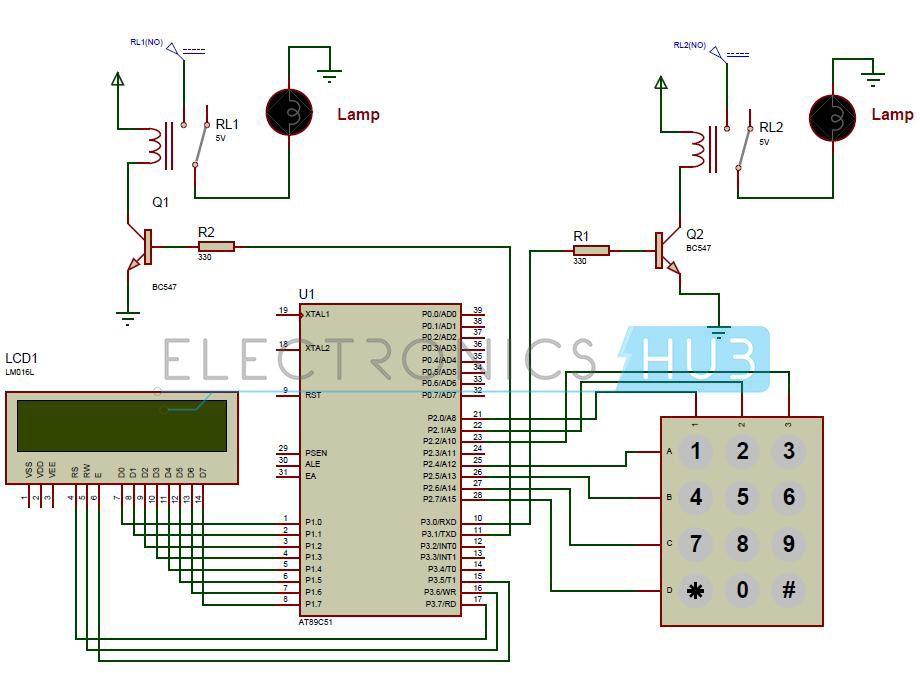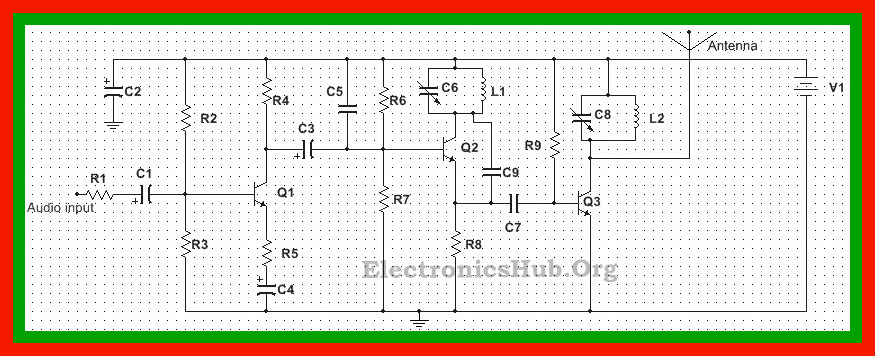Password Based Circuit Breaker
Contents [show]
Nowadays, electrical accidents to the line man are increasing, while repairing the electrical lines due to the lack of communication between the electrical substation and maintenance staff. This project gives a solution to this problem to ensure line man safety. In this proposed system the control (ON/OFF) of the electrical lines lies with line man.
This project is arranged in such a way that maintenance staff or line man has to enter the password to ON/OFF the electrical line. Now if there is any fault in electrical line then line man will switch off the power supply to the line by entering password and comfortably repair the electrical line, and after coming to the substation line man switch on the supply to the particular line by entering the password. Before going to know about this circuit, also read the interesting post: Password based door locking system.
Contents [show]
Nowadays, electrical accidents to the line man are increasing, while repairing the electrical lines due to the lack of communication between the electrical substation and maintenance staff. This project gives a solution to this problem to ensure line man safety. In this proposed system the control (ON/OFF) of the electrical lines lies with line man.
This project is arranged in such a way that maintenance staff or line man has to enter the password to ON/OFF the electrical line. Now if there is any fault in electrical line then line man will switch off the power supply to the line by entering password and comfortably repair the electrical line, and after coming to the substation line man switch on the supply to the particular line by entering the password. Before going to know about this circuit, also read the interesting post: Password based door locking system.
Block Diagram:
Principle:
The main component in the circuit is 8051 microcontroller. In this project 4×3 keypad is used to enter the password. The password which is entered is compared with the predefined password. If entered password is correct then the corresponding electrical line is turned ON or OFF. In this project a separate password is provided to each electrical line. Activation and deactivation of the line (circuit breaker) is indicated by the load.
The main component in the circuit is 8051 microcontroller. In this project 4×3 keypad is used to enter the password. The password which is entered is compared with the predefined password. If entered password is correct then the corresponding electrical line is turned ON or OFF. In this project a separate password is provided to each electrical line. Activation and deactivation of the line (circuit breaker) is indicated by the load.
Circuit Diagram:
Hardware Requirements:
- at89c51 controller
- 8051 programming board
- Programming cable
- DC battery or 12V,1A adaptor
- 4×3 keypad
- 16×2 LCD
- 5V Relays – 2
- Lamps – 2
- BC 547 Transistors – 2
- 330 ohm resistors (1/4 watt) – 2
- connecting wires
Software Requirements:
- Keil compiler
- Flash magic
- Proteus
Hardware Requirements:
- at89c51 controller
- 8051 programming board
- Programming cable
- DC battery or 12V,1A adaptor
- 4×3 keypad
- 16×2 LCD
- 5V Relays – 2
- Lamps – 2
- BC 547 Transistors – 2
- 330 ohm resistors (1/4 watt) – 2
- connecting wires
Software Requirements:
- Keil compiler
- Flash magic
- Proteus
Circuit Design:
The above circuit consists of 8051 series controller, 4×3 keypad, LCD, relays and two loads. LCD data pins are connected to PORT1 and control pins RS, RW, EN pins are connected P3.7, P3.6 and P3.5 respectively. Here LCD is used to display the information. Keypad is connected to PORT2 of the controller. Using this keypad we need to enter the password. Lamps are connected to P3.0 and P3.1 through the relays. These are used to indicate circuit breaker state.
In this project we have used bc547 transistors to drive the relays. AC load should be connected to COM and NO (Normally open) pins. 5V relays are used to drive the AC loads.
The above circuit consists of 8051 series controller, 4×3 keypad, LCD, relays and two loads. LCD data pins are connected to PORT1 and control pins RS, RW, EN pins are connected P3.7, P3.6 and P3.5 respectively. Here LCD is used to display the information. Keypad is connected to PORT2 of the controller. Using this keypad we need to enter the password. Lamps are connected to P3.0 and P3.1 through the relays. These are used to indicate circuit breaker state.
In this project we have used bc547 transistors to drive the relays. AC load should be connected to COM and NO (Normally open) pins. 5V relays are used to drive the AC loads.
Algorithm:
- Initially declare the PORT1 to LCD data pins and control pins to P3.5, P3.6 and P3.7 and declare PORT2 to keypad. And use P3.0, P3.1 to loads.
- Initially display enter password on LCD.
- Now read the five digit password from the user.
- Compare the entered password with stored password.
- If correct then ON or OFF the particular load and display line or load status on LCD.
- If the password is wrong then display PWD IS WRONG on LCD.
- After some delay again ask to enter password
- Initially declare the PORT1 to LCD data pins and control pins to P3.5, P3.6 and P3.7 and declare PORT2 to keypad. And use P3.0, P3.1 to loads.
- Initially display enter password on LCD.
- Now read the five digit password from the user.
- Compare the entered password with stored password.
- If correct then ON or OFF the particular load and display line or load status on LCD.
- If the password is wrong then display PWD IS WRONG on LCD.
- After some delay again ask to enter password
Saqlain6050@gmail.comIf you need Source code to contact this address
Ph# +923089223448




